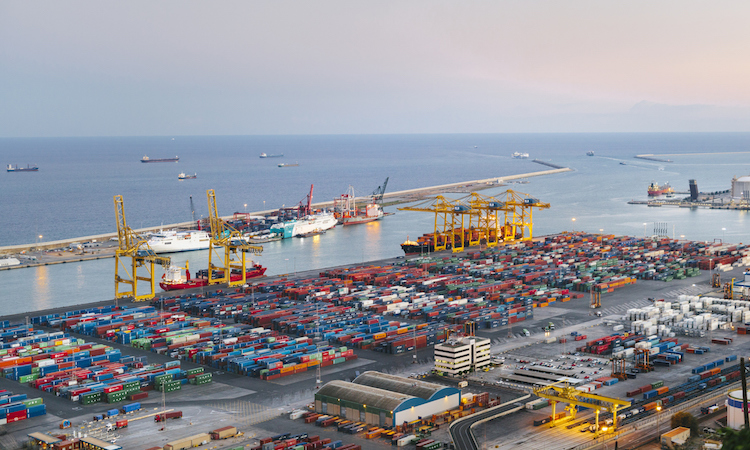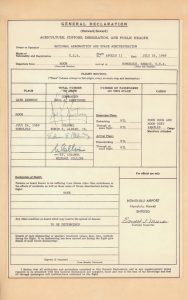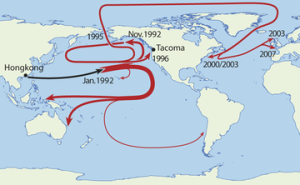Fun Facts About Shipping History
November 17, 2011

Those of us in the shipping world know how crazy things can get out there on the road. Well here are four fun facts about the history of shipping that you can impress people with if the time arises. But frankly, if the time arises where this info comes in handy, well then you probably need to find new friends. On with the show!
Big Steps In Shipping and Storage
Ceramic containers for food storage date back around 8,000 years and were developed in the Middle East. Prior to that, food was primarily eaten where it was cultivated or transferred, albeit poorly, wrapped in animal skins or grasses.
Wooden boxes, barrels and crates came around 3,000 years later. They have even been found holding personal belongings in Egyptian tombs.
The Man Who Invented The Shipping Container
Shipping containers, specifically the ISBUs (Intermodal Steel Building Units) that we know today have been standardized, but up until 1970s shipping, loading and unloading was a horrible mess since each company had its own personal design and system for shipping. American Malcolm McLean figured there had to be a better way.
Over 20 years, McLean used his knowledge to design the perfect shipping container that was strong, stackable, theft-resistant and could be transferred between truck and rail with ease. His design was patented in 1956.
It wasn’t a success until the US Navy adopted the shipping containers. At that point it became the global standard. As a result, freight could be loaded and unloaded faster and by fewer people, reducing the costs by more than 90%.
The Red Tape Never Ends
 When the Apollo 11 astronauts returned from the Moon, they had to fill out some paperwork for customs agents. You see, technically they left the United States (boy did they), and as a result the astronauts had to be officially readmitted through Immigration. This led to the seemingly tedious task of filling out “Moon” after place of departure. It’s not like the agents didn’t know where they were. The whole world was watching!
When the Apollo 11 astronauts returned from the Moon, they had to fill out some paperwork for customs agents. You see, technically they left the United States (boy did they), and as a result the astronauts had to be officially readmitted through Immigration. This led to the seemingly tedious task of filling out “Moon” after place of departure. It’s not like the agents didn’t know where they were. The whole world was watching!
In case you were wondering, the cargo was listed as “Moon rock and Moon dust samples.” Notice that there were no aliens listed. They must have come back on Apollo 14.
See the full Declaration here.
Never Leave A Man Behind
In 1992 a shipping crate bound for the US from Hong Kong fell overboard and was lost at sea. The cargo that spilled into the ocean was 28,000 plastic duck bath toys. Those toys have been following ocean currents ever since reaching every cont inent but Antarctica, including surviving the Arctic Ocean and moving around North America to reach the British Isles.
inent but Antarctica, including surviving the Arctic Ocean and moving around North America to reach the British Isles.
Scientists have been using the data collected from ships spotting the yellow tide or duckies washing ashore to study ocean patterns and how long it takes for them to navigate the globe.
The shipping industry is always full of surprises and you need a company that can adapt to a changing world. That’s why Ernest employs a stellar team of engineers and designers to make sure your shipping solution is cost-effective, efficient and safe. Contact us today to find out more.


